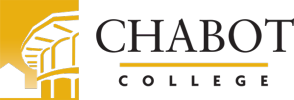
Elementary Teacher Education
This program map from the 2024-2025 catalog year represents one possible pathway to complete this program. Your pathway may vary depending on your transfer plans and also previous college credit, including AP Test scores, concurrent enrollment courses and high school articulated courses.
I'm ready to get started. What do I do next?
- Review this program map to get an overview of the required courses
- Meet with a counselor to develop your customized student education plan www.chabotcollege.edu/counseling
- Use DegreeWorks, an online student education planning tool, to track your progress toward graduation www.chabotcollege.edu / admissions / degreeworks
Students who earn this degree will be prepared to teach the breadth of subjects required of a public elementary school teacher. You will also get hands-on experience in a public school classroom in ECD 11 that you may apply towards a fieldwork hours requirement for admission to a teaching credential program.
What can I do with this major?
If you earn this degree with either the IGETC and/or CSU GE-Breadth course patterns, you can transfer to a CSU campus with a major in Liberal Studies, Elementary Teacher Preparation. Earning a Liberal Studies degree will fulfill the subject matter competency requirement for a Multiple Subject Teaching Credential without having to take the CSET exam. Elementary school teachers are in high demand across California. Teaching can be a rewarding and satisfying career that allows you to make a meaningful contribution to your community and its future.
Learning and Career Pathway
- Social Sciences, Humanities & Education
Icon Key
Semester 1
ECD
56
Child Growth and Development
COMM
1
Fundamentals of Speech Communication
POSC
1
Introduction to American Government
MTH
41
Number Systems
Semester 2
ENGL
4A
Critical Thinking and Writing about Literature1
Human Biology Course (Choose one) 2
GEO
5
World Regional Geography
HIS
3
World History: Beginnings to 1500
List A Course
Semester 3
ENGL
7A
Critical Thinking and Writing across Disciplines1
ECD
11
Exploring Education
Intro to Chemistry (Choose one)
List B Course #1
LIST B Course #2
Semester 4
HIS
7
U.S. History Through Reconstruction
PHYS
11
Descriptive Physics
List B Course #3
List B Course #4
List A
Choose one course from the list below